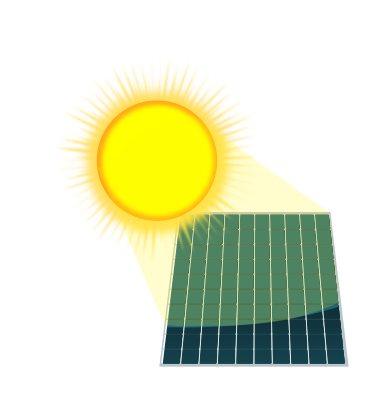I’m all for putting solar panels all over the place, but won’t these get dusty and oily and need loads of cleaning after trains pass over?
Also, costing €623,000 over three years sounds rather expensive for just 100m (although that roughly equates to 11KW).



I added those steps, because it is exactly what is currently done at least here in Germany and at scale. Although we might need to clarify here if we want to limit the discussion to just wood and heating specifically, or also other plants such as corn/rapeseed that are grown for biomass often converted into gas/biofuels (like with E10 petrol) to make existing technologies use less fossil fuels without need to immediately replace them.
Yes, directly heating with electricity e.g. with infrared heating panels is not the way to go and uses a ton of energy.
But heat pumps are a great piece of technology and pretty popular in nordic countires aswell, aren’t they? With well designed ones having a COP (coefficient of performance) of 3-5. Technically they aren’t creating heat, but moving it, however i think we can ignore this distinction, since both leads to the desired effect of a warm house. Added bonus that depending on the device they might also work for cooling, which will sadly become more relevant.
There definitely are ways to store energy, although of course this comes at a price and the conversion steps are associated with energy losses. Besides the obvious batteries (which are improving, but admittedly probably not at a point sufficient enough to fully scale as needed), there are other options. Pumped-storage hydroelectricity is a in my opinion cool solution. You can also convert excess to hydrogen gas and store that.
Obviously a tree standing in the forest is stored great, but between the time to grow and sufficient supply for each season, how much space would we actually need for this solution if it were actually adpoted at scale (enough to replace existing fossile solutions)? Probably hard to estimate, but i’d imagine it would be a lot. And comercial forests like that probably aren’t great for bio diversity either, and not risk free looking at the current health of existing ones and the increase in wildfires.
That is true for sure. Although being better than coal in regard to climate impact is a low bar.
I’m not certain if i understand what exactly you mean with “central heating system”. Do you just mean having something like a boiler that uses e.g. gas or wood pellets in the basement? If so those are common in Germany aswell. Particularly the gas boilers are something we want to move away from (there was huge outcry when the green party of our government moved to ban new installation of those).
So i guess in the context of our discussion the question would be if the better replacement for those would be a wood pellet burner or something like a heat pump. And at scale my opinion is that the later is the way to go. As stated both because i doubt that wood production could scale that large and air quality is also a factor; see e.g. here. If too many people in dense residential areas would start to use them it could have health impacts. Not that we don’t have those already from ICE cars, but no need to replace those as a source with something else, now that we are finally starting to get rid of them.
I’m learning a lot about energy in Germany this way. Thanks! So basically farmers in Germany grow food to make fuel for cars? Like ethanol? Thats an abundance of agricultural lands!
Pumped hydro is great, but will only cover that much energy. Of course, there are no alps in the Nordics, but even so.
The batteries available today cover the need for an hour of the city they are situated in. That’s not enough. So for seasonal storage you’d need to store energy as heat, as chemical energy (wood/methanol) or as H2/bio, which I think is what you describe. H2 has much of the problems of batteries in terms of storage space and the risk of fires/explosions, which limits the possibilities somewhat. But if I’ve understood correctly from the TEN-T directive, Germany and Switzerland has invested pretty much in H2?
Heat pumps are great, and are indeed well used, they run out of steam when its below -5C, which isn’t rare up here. And it’s seldom used in cities. Heat pumps collecting hear from the bedrock (through a drilled 100m hole in the ground) is more common, but most common is district heating. (I got the name wrong in translation earlier)
Instead of one boiler in every house, there is one boiler per 50-100000 inhabitants or so. Efficiency is great and heat is pipes to where it is used. When it’s cold (-20 or so) those boilers go through tens of semitrucks of wood every day. And as I said, it’s a fairly common set up in parts of Europe, although i understand its not common i Germany.